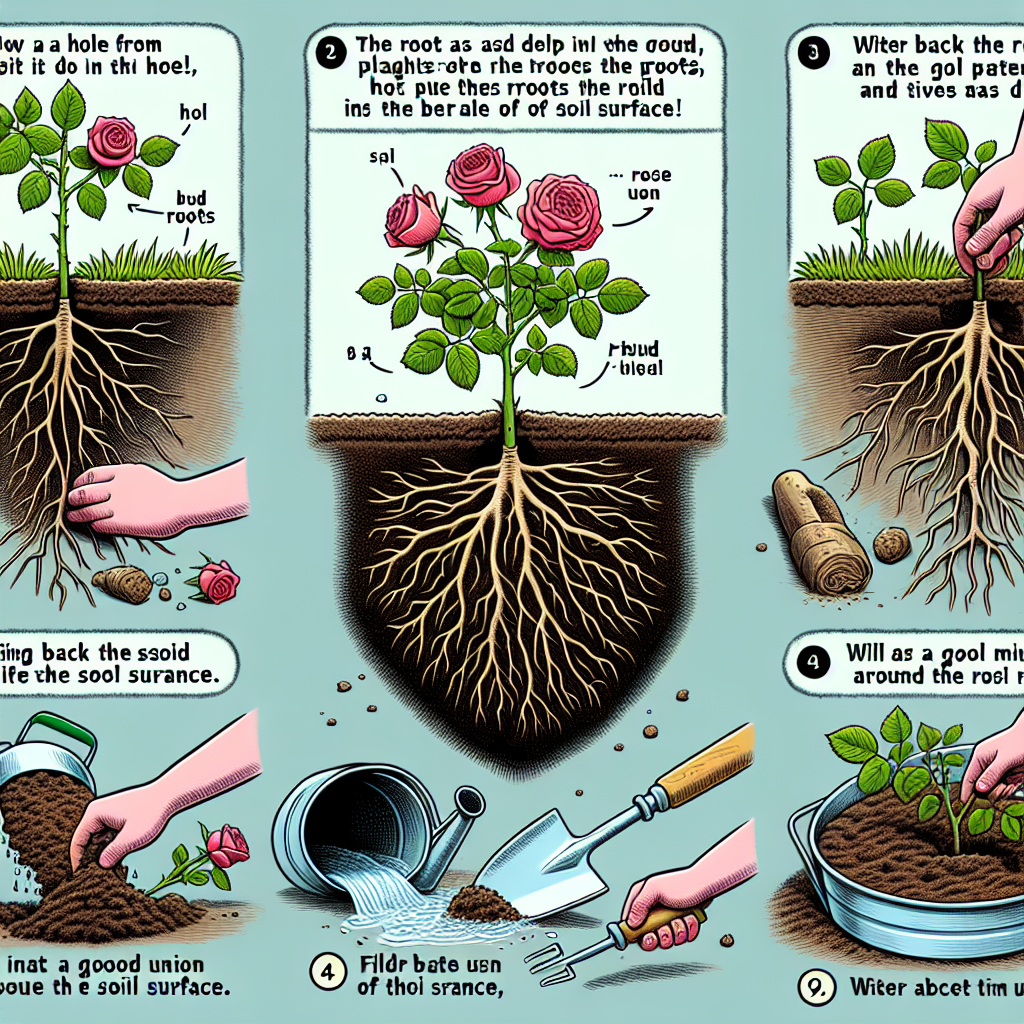
How do i plant bare root roses
The Complete Guide on How to Plant Bare Root Roses
If you are looking to add a touch of beauty to your garden, planting bare root roses is a fantastic way to do so. These hardy plants are not only visually appealing, but they also bring fragrance and vibrant colors to your outdoor space. In this comprehensive guide, we'll walk you through the process of planting bare root roses, ensuring they thrive and blossom in your garden. So, how do I plant bare root roses? Let's dive into the essentials.
Understanding Bare Root Roses
Before we get into the planting process, it's crucial to understand what bare root roses are. Unlike potted roses, bare root roses are sold without soil around their roots. They typically come dormant, packed in a protective material to keep them from drying out. This method of sale often results in healthier plants at a lower price, making them a popular choice among gardeners.
When to Plant Bare Root Roses
Timing is everything when it comes to planting bare root roses. Here are some key points to consider:
- Spring Planting: The best time to plant bare root roses is in early spring when the risk of frost has passed.
- Fall Planting: In milder climates, fall planting can also be successful, allowing the roses to establish roots before winter.
Always check your local climate and hardiness zone to determine the optimal planting time in your region.
Choosing the Right Location
Roses thrive in sunny conditions and well-draining soil. Here’s how to select the perfect site for your bare root roses:
- Choose a location that receives at least 6-8 hours of sunlight per day.
- Avoid areas with waterlogged soil, which can lead to root rot.
- Ensure the area is sheltered from strong winds, as this can damage delicate blooms.
Preparing Your Tools and Materials
Before planting your bare root roses, gather the necessary tools and materials:
- A spade or shovel
- A garden fork or trowel
- Compost or well-rotted manure
- A bucket of water
- A pair of gardening gloves
Preparing the Soil
The health of your roses largely depends on the condition of the soil. Follow these steps to prepare your planting area:
- Clear the area of weeds and debris.
- Loosen the soil with a garden fork, digging down at least 12 inches.
- Add compost or well-rotted manure to improve soil fertility and drainage.
- Mix the compost into the top layer of soil and level the area.
Soaking Bare Root Roses
Before planting, it’s beneficial to soak your bare root roses to revive them after their dormant period. Here’s how:
- Fill a bucket with water.
- Submerge the bare root roses in the water for 2-4 hours.
- Do not soak for longer than 24 hours, as this may damage the roots.
Digging the Planting Hole
Now that you’re ready to plant, it’s essential to dig the right hole for your bare root roses:
- The hole should be about 18 inches wide and 12-15 inches deep.
- Ensure it is wide enough to accommodate the spreading roots without crowding.
Planting the Bare Root Roses
With the hole prepared, it's time to plant your roses. Follow these steps:
- Create a mound of soil at the bottom of the hole to support the rose roots.
- Position the rose so that the graft union (swelling on the stem) is just above the soil level.
- Spread the roots out gently, avoiding any twisting or bending.
- Fill the hole with soil, ensuring there are no air pockets around the roots.
- Water the rose well to help settle the soil.
Post-Planting Care
After planting, it’s crucial to provide your bare root roses with the care they need to thrive:
- Watering: Water regularly, ensuring that the soil stays moist but not soggy.
- Mulching: Apply a layer of mulch around the base to retain moisture and suppress weeds.
- Fertilizing: Once new growth appears, you can start a fertilization schedule with a balanced rose fertilizer.
Pest and Disease Management
Keeping your roses healthy involves monitoring for pests and diseases. Here are some common issues and their treatments:
| Pest/Disease | Symptoms | Treatment |
|---|---|---|
| Aphids | Yellowing leaves, curled foliage | Insecticidal soap or neem oil |
| Powdery mildew | White powdery spots on leaves | Fungicidal treatment, increasing air circulation |
| Black spot | Dark spots on leaves, yellowing | Remove affected leaves, apply fungicide |
Patience: The Key to Success
Remember, planting roses is not a one-time task but a long-term commitment. It may take a season or two for your bare root roses to fully establish and bloom beautifully. Here are some tips to encourage growth:
- Consistent watering during the first season is crucial.
- Continue to deadhead spent blooms to encourage new growth.
- Be patient and keep an eye on their development.
Conclusion
Knowing how to plant bare root roses is only the beginning of what can be a rewarding gardening experience. From understanding their needs to providing proper care, these steps will ensure that your roses bloom beautifully and fill your garden with color and fragrance for years to come. With patience and attention, you will undoubtedly succeed in creating a stunning rose garden.
As you embark on your rose planting journey, remember that each step is important. Enjoy the experience, and good luck with your new plants!
By Guest, Published on September 29th, 2024